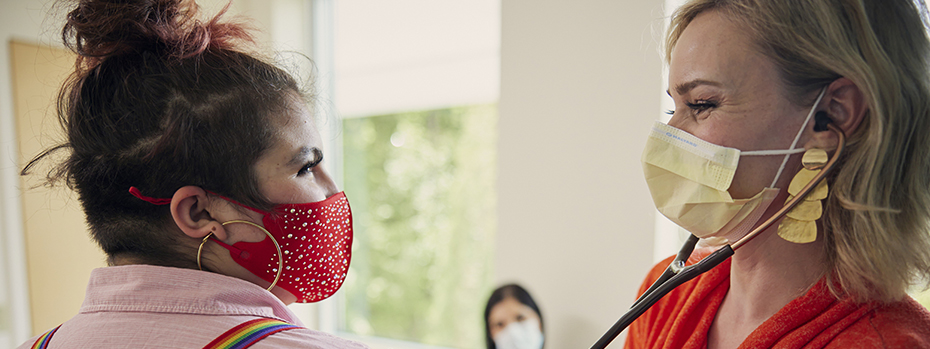Pediatric Blood Disorders

The team at OHSU Doernbecher Children’s Hospital includes some of the nation’s top specialists in pediatric blood disorders. We work together to provide the best possible care for your child.
- Our hematologists are blood disorder experts who only treat children.
- Our team includes leaders of OHSU’s Hemostasis and Thrombosis Center, one of just 12 federally funded regional hemophilia treatment centers in the U.S.
- We offer outreach clinics each year in Eugene and Medford.
- Our providers are also researchers, participating in clinical trials to better understand and treat these diseases. We may be able to offer your child access to promising new treatments.
- We run the Spots, Dots and Clots Clinic at the OHSU Center for Women’s Health. The clinic helps teens and young women with issues related to bleeding and women’s health.
Understanding pediatric blood disorders
Blood disorders can affect your child’s ability to produce blood cells or affect how their blood cells and blood chemicals work.
A blood disorder might:
- Limit the blood’s ability to clot (to stop bleeding with platelets or clotting proteins)
- Cause clots inside blood vessels, which can affect blood flow
- Affect the production of red blood cells, which help circulate oxygen through the body
- Affect the production of white blood cells, which fight infection
Blood disorders have a few common causes. Many blood disorders are congenital, which means your child is born with the condition. Blood disorders can also be caused by other diseases, side effects of medicine your child takes, and missing nutrients in your child's diet.
Locations
Doernbecher Children’s Hospital, tenth floor
700 S.W. Campus Drive
Portland, OR 97239
Doernbecher Children’s Hospital, seventh floor
700 S.W. Campus Drive
Portland, OR 97239
Free parking for patients and visitors
Refer a patient
- Refer your patient to OHSU Doernbecher.
- Call 503-346-0644 to seek provider-to-provider advice.
Blood disorder care at Doernbecher
We care for blood disorders at two clinics at Doernbecher Children’s Hospital.
Anemia and complex conditions
Location: Pediatric cancer clinic, tenth floor
Conditions we treat: Noncancer blood disorders
- Anemia
- Neutropenia
- Thrombocytopenia
- Autoimmune blood disorders
- Vascular anomalies
- Stroke in children
- Bone marrow/stem cell transplant
Bleeding and clotting disorders
Location: Hemostasis and Thrombosis Center, seventh floor
Conditions we treat: Bleeding and clotting disorders
- Hemophilia
- Von Willebrand disease (VWD)
- Thrombosis
- Platelet disorders
- Protein deficiency
- Heavy menstrual bleeding
- Other bleeding and clotting disorders